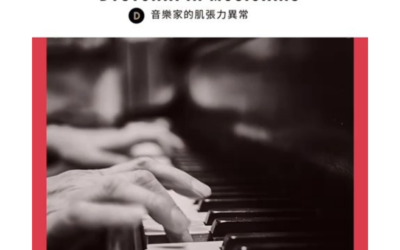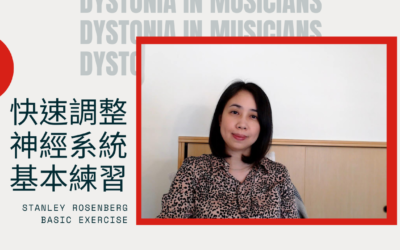Our Website
Monica Chen
This website is set up by Dr. Monica Chen. She is the first practitioner of musician’s dystonia in Asia, and she is also the first qualified practitioner of the Farias Technique. She is currently working as a consultant in training musicians on the training platform of Dr. Joaquin Farias, an authority on dystonia treatment. She has been committed to the research and promotion of dystonia in musicians since 2014, and set up the first Chinese website to introduce this disease. She has been studying with Dr. Farias, and based on the new knowledge of neuroscience, she helps the musicians find their lost movements by motor training. Since she herself has a DMA in violin performance, she can better understand the difficulties of musicians and can give advice specifically to the music performing movements.
In addition to being a violinist and practitioner of dystonia, Dr. Monica Chen is also a translator. She translated Dr. Farias’ book “Limitless”, and this book became the first Chinese book specifically related to dystonia. Dr. Monica Chen is currently a practitioner of Tomatis Method. This method is to stimulate the brain by listening to music, and then improve the state of the brain. It is very useful for children with autism or learning disabilities.

Music is still there.
Your body refused to move.
Dystonia is a movement disorder.
Due to the confusion between nervous system and movement integration,
As a result, continuous or intermittent muscle contractions occur.
To regain is to begin again.
Find again your lost movement.
Dystonia is not just a performance-related injury.
It is a complicated disease which involves the brain.
In the past, dystonia is often pronounced as an incurable disease.
Nowadays, your movements will become a silver lining for healing.
Symptoms
The movements that were so familiar in the past. Now seems to disappear in the brain’s archives.
Hand
Fingers are curled inward.
Unable to control the speed.
Playing inefficiently.
Hitting the wrong notes often.
Vocal Cord
Intermittent sound.
Abnormal air flow control.
Difficulties in singing a specific range.
Difficult to control vibrato.
Embouchure
Unable to make sound.
Unable to maintain embouchure.
Tremors in lips.
Air leak while playing.
Foot
Unable to lift the heel up.
Abnormal stiffness of lower limbs.
Flip the ankle to the inside.
The foot can’t flatten against the ground.
Features
Understanding
Understanding dystonia is the first step towards rehabilitation. This website reveals the true appearance of dystonia from many aspects, and provides the latest treatment information. Whether you’re a player with dystonia or without dystonia, or a music teacher, you can learn more about it through this website.
Training
Our movement training sessions are specially designed for musicians with dystonia. It is a non-invasive but effective rehabilitation method. It’s different from general physical therapy; this rehabilitation is based on movement training and provides professional training for the movements of performance.
Information
With the rapid development of neuroscience, research related to dystonia has gradually increased in the past two decades, and the understanding of this disease has also greatly exceeded the past. This website provides the latest information on dystonia, as well as discussing issues related to music performance from the perspective of body structure and neuroscience.
Don’t Miss
News and Articles
We offer the latest information on dystonia and articles related to music performance.
A Better Future
I don’t like to call the process of dystonia rehabilitation a long-term struggle. As if the patient did not fight it seriously, did not try his best to beat the disease (only those who restore function are the winners), so he succumbed to the disease. “Live with Dystonia” is not a matter of winning or losing. We do not need to overcome the disease, but accept it as a part of our lives.
Recovery Process of Musician’s Dystonia~Piano
Changes in a pianist affected by dystonia before training, 15 days after training, and 90 days after training.
Basic Exercise to Quickly Adjust the Nervous System (with English Subtitles)
The basic exercise introduced in this video was invented by Stanley Rosenberg. It can quickly stimulate the nervous system and restore the sympathetic and parasympathetic nervous system to a balanced state. Most patients with dystonia have the problem of low parasympathetic nervous system. During rehabilitation, in addition to the movement exercises, improving the balance of the nervous system is also necessary.
Contact
Reservation and Inquiry
Sessions in Person
We offer one on one sessions and small group sessions.
Location: Taipei, Taiwan.
Sessions Online
For online sessions, please book on Farias’ training platform.




